The main difference between pistou and pesto is the addition of pine nuts or walnuts in pesto. While both condiments have basil, olive oil, and garlic as a base, pistou has a lot more cheese, making it creamier with a more dominant savory taste than pesto.
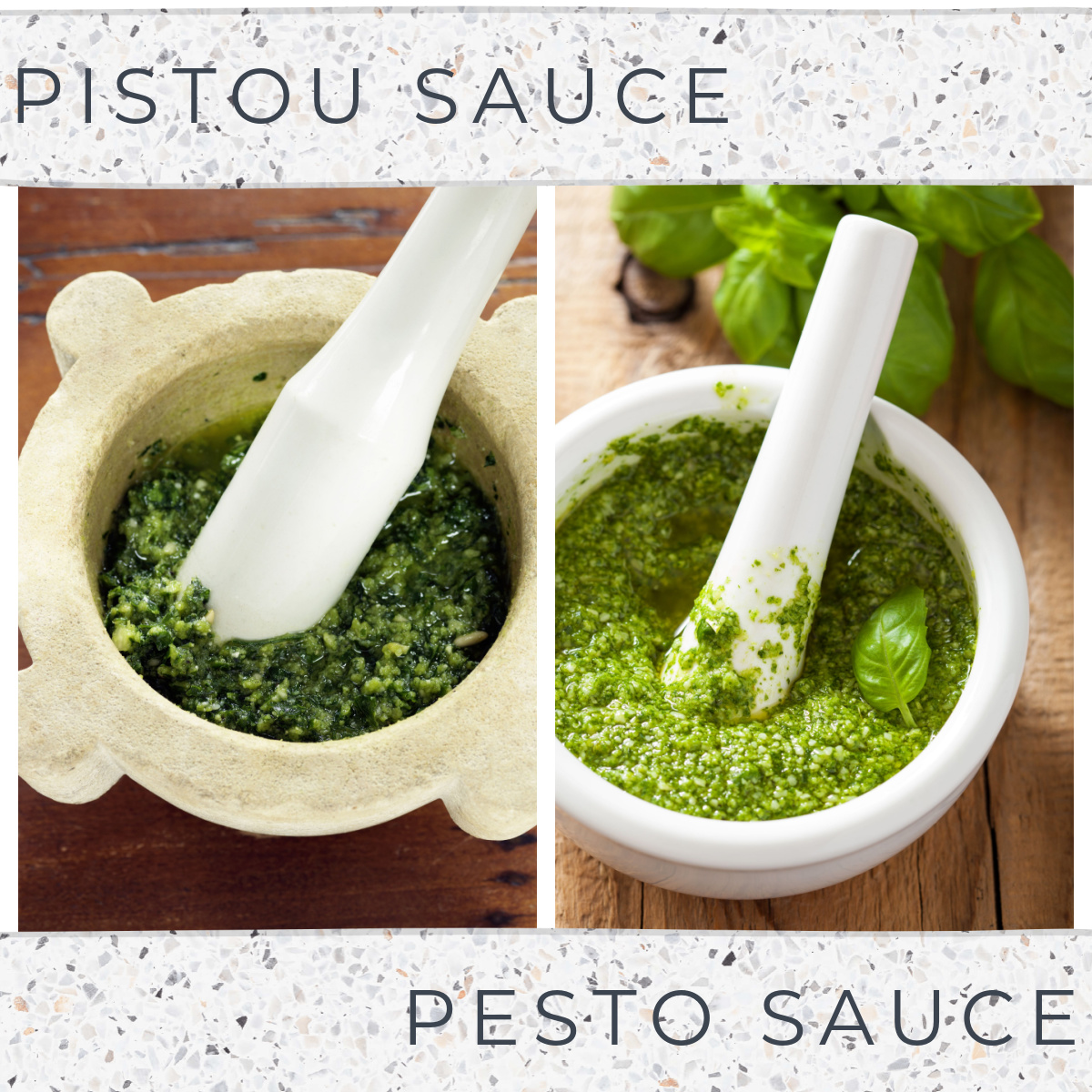
This article will talk about how the origin, nutrition, ingredients, and uses of each condiment are different and how they are the same. I also included an easy-to-follow pesto and pistou recipe, so be sure to read to the end.
Table of Contents
What’s the difference between pistou and pesto?
Pistou is an uncooked French sauce traditionally made with basil, olive oil, garlic, and a hard cheese like Parmesan or Pecorino Romano. It can be used as a condiment or ingredient in cooking.
Pesto is a similar, more popular Italian sauce that uses the same ingredients but reduces the amount of cheese and includes nuts like pine nuts or walnuts. It is best known as an addition to pasta, but is also excellent served with eggs, steak, salads, and much more.
How does each sauce differ in flavor?
The addition of basil to both sauces results in a combination of sweet, savory, and minty flavors. They’re aromatic and herbaceous with a vibrant green shade that looks mouth-wateringly good on the plate.
While both sauces have a strong taste of basil and garlic, pistou has a more dominant savory, cheesy flavor. Pesto has a more complex flavor profile thanks to the addition of nuts.
Culinary Uses for Each Sauce
Both sauces can be used to add punchy flavor to food, whether they’re stirred into other ingredients or used as a condiment. The biggest difference is that pistou is a key ingredient in soupe au pistou. This is a classic white bean and vegetable soup from the south of France that gets topped with pistou before serving.
Other popular uses for pistou and pesto
- Smeared on toast, pizza, or bruschetta
- Tossed through pasta or vegetables
- Dolloped onto soups
- Mixed into dips and dressings
- Stirred into risotto and other rice dishes
- Spread over toast and topped with eggs
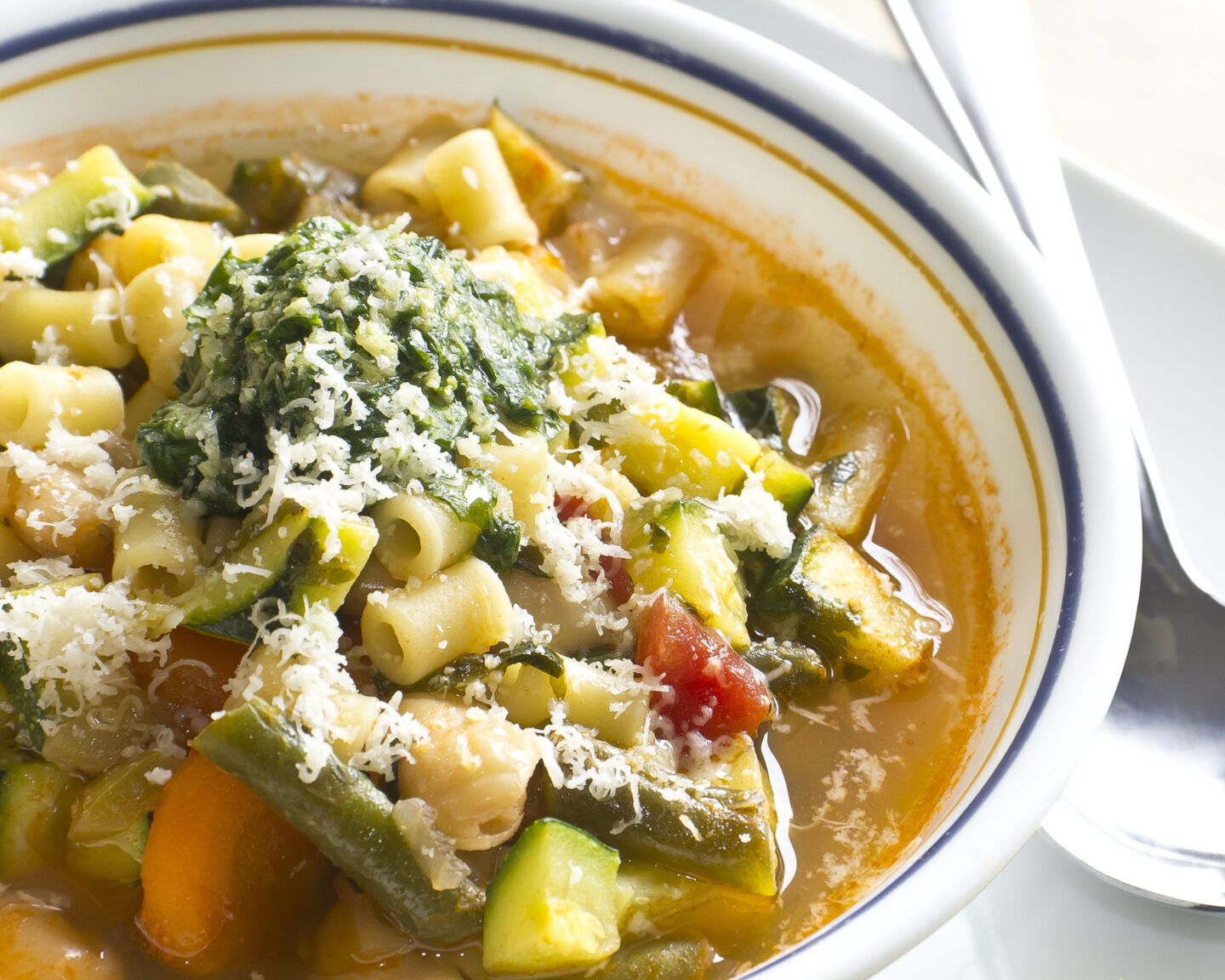
Ingredient Comparison
Recipes for each sauce can vary depending on the region, town, or chef who’s making them. The following ingredients are most commonly used:
Pistou: basil, olive oil, garlic, and grated hard cheese.
Pesto: basil, olive oil, garlic, nuts, and grated hard cheese.
While Italians use regular basil in pesto recipes, authentic French pistou is made using pistou basil. This herb has smaller leaves than the regular basil variety. They offer a mild, sweet flavor with a delicious fragrant aroma once crushed.
Compared to pesto, you’ll often find that pistou recipes use a higher ratio of cheese. So, while pistou may combine an equal amount of basil leaves and cheese, pesto uses basil in much higher quantities as the key ingredient.
Related reading: Salsa verde vs chimichurri - how are they different?
Origin of Pesto and Pistou
Pesto, or pesto alla Genovese, originated in Genoa, which is in the Liguria region of northern Italy. The modern variety of pesto was first mentioned in 1870 by Giovanni Battista Ratto.
The southeast of France borders Italy and they share similar flavor preferences. Having no pine nuts in the Provence region, the French created pistou, their own version of pesto.
Commonly Asked Questions
It is perfectly fine to use pesto in place of pistou in recipes as they are very similar. If you decide to use pesto, you may want to add some extra hard cheese like asiago or parmesan.
The term pesto derives from the word "pestare", meaning “to crush” or “to pound”. This is a reference to the traditional preparation which involved crushing in a mortar and pestle.
Worth a read: What are some useful salsa verde alternatives?
Nutrition
Pistou and pesto are both excellent sources of vitamins A, C, and K as well as manganese and iron. They also provide a good source of magnesium, calcium, and omega-3. These benefits come from the basil.
With the addition of pine nuts, pesto is rich in zinc, iron, and protein. Pistou offers more calcium as it generally has more cheese added.
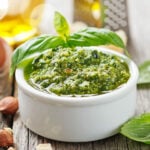
Pesto Recipe
Ingredients
- 1 ¼ cups fresh basil
- ¼ cup pine nuts
- 1 tbsp sunflower seeds
- 2 garlic cloves halved
- ¾ cup Parmesan shredded
- 6 tbsp olive oil
Instructions
- Preheat the oven to 355°F (180°C). Line a baking tray and lay the pine nuts and sunflower seeds in one even layer. Bake for 5-7 minutes until toasted. Allow to cool completely.
- Boil a jug of water and pour one cup into a bowl. Drop the basil into the water for 10 seconds to blanch the leaves then use tongs to transfer them into a bowl of ice water. Submerge them to stop the cooking process then dry them with a towel. This step gives the basil a much more vibrant shade of green.
- Add pine nuts, sunflower seeds, basil, garlic, and Parmesan to a blender and process until all ingredients are finely chopped.
- As the processor continues, slowly pour in the oil until it gets absorbed and all ingredients are well combined.
- Scoop the pesto into a suitable airtight container until you’re ready to use it.
Be sure to check out our full recipe on how to make pesto which includes handy tips.
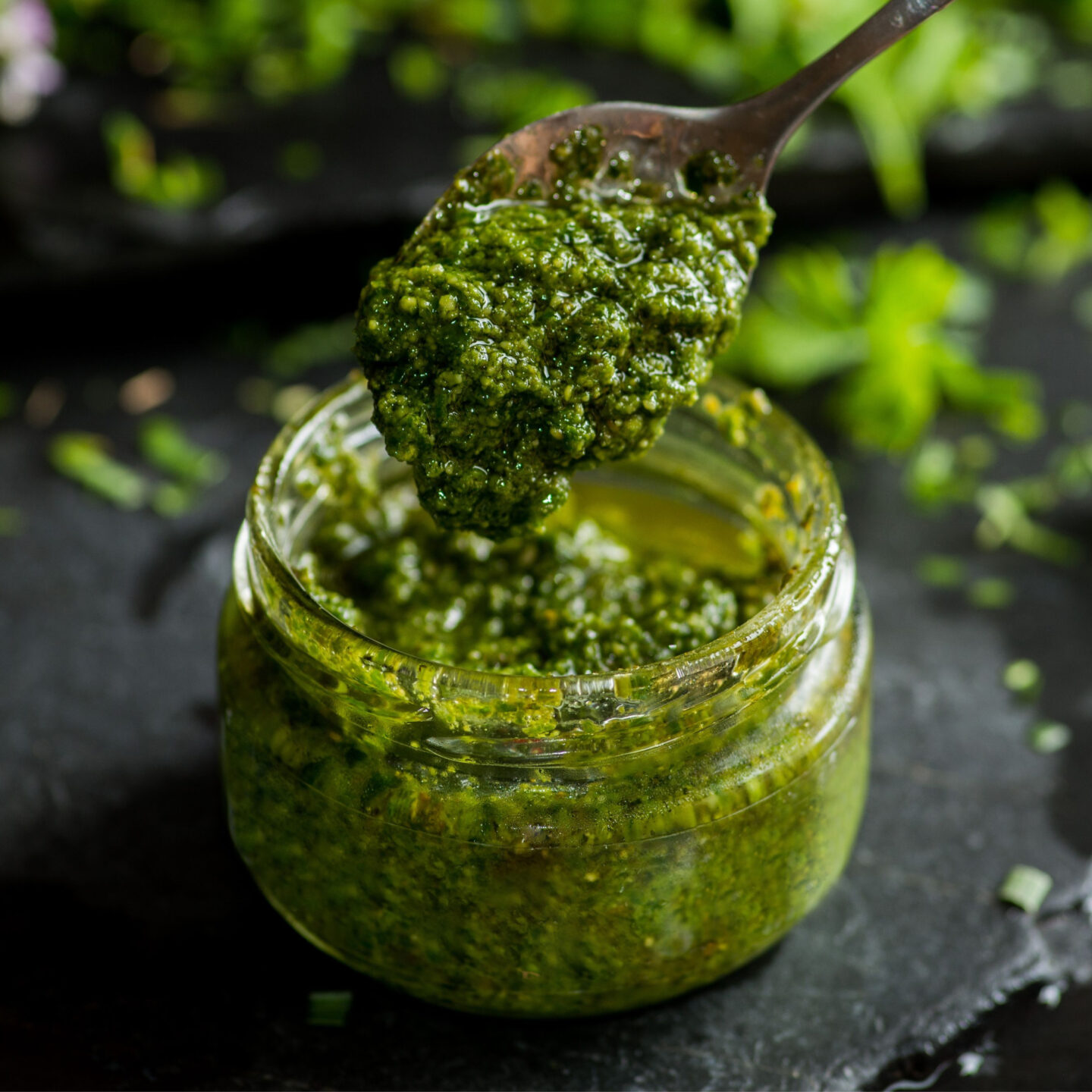
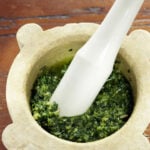
Pistou Recipe
Ingredients
- 2 garlic cloves
- 1 cup fresh basil leaves
- 1 cup grated parmesan
- ⅓ cup olive oil
Instructions
- Chop the garlic finely using a knife and chopping board.
- Add basil, parmesan, and garlic to a food processor and blend for a few seconds.
- While the processor is on, slowly drizzle the oil into the other ingredients until pesto reaches a suitable thick puree consistency. Season with salt and pepper and process briefly.
- Transfer to an airtight container and store refrigerated for 2-3 days.
Notes
- If necessary, stop the processor and scrape down the sides, then keep blending.
- You can toss the garlic cloves into the blender whole, but we chop them first to ensure big lumps of garlic don’t get missed by the blender.
Summing Up
Pistou and pesto are essentially the same sauce, with subtle variations. Pesto is an Italian cold green sauce made from basil, garlic, nuts, and olive oil. Because nuts were difficult to source in France, they left them out and upped the cheese to compensate.
Both sauces taste great when spooned over finished savory dishes, mixed into food, or spread on almost anything. Feel free to use them interchangeably in your recipes.

Leave a Reply